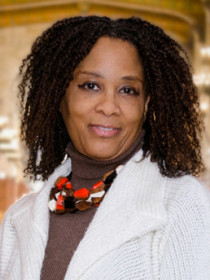
Karyn Lacy
Connect with Karyn
About Karyn
Lacy's research focuses on black elites, race relations, residential segregation, identity, parental socialization, and suburban inequality. She is the author of the award-winning book, Blue-Chip Black: Race, Class, and Status in the New Black Middle Class. Lacy’s public writing has appeared in the New York Times, Vox, Public Seminar, and The Chronicle of Higher Education.
Contributions
How Middle-Class Blacks Fit into American Suburbs
In the News
Publications
Examines how social class operates in the United States today.
Qualifies and complicates traditional narratives of race, property, and citizenship in the United States. Explores how the raced history of property affects understandings of home and citizenship.
Establishes the link between an affinity for black spaces and the alternative assimilation trajectories of middle-class blacks. Finds that middle-class blacks engage in a variant of segmented assimilation, privileging the black world as a site for socializing even if they live in a white suburb. Suggests that this population of middle-class blacks does not perceive itself as permanently constrained to the bottom rung of a racial hierarchy.
Suggests that extending Wilson's argument, that social class mattered more for getting ahead than race by the mid-twentieth century, to include a new period that encompasses the last twenty-five years, would help to illuminate more recent structural advantages that contribute to class privilege in American society as well as an emerging fault line within the black middle class.
Examines the complicated sense of identity that middle-class blacks craft to manage their interactions with lower-class blacks, middle-class whites, and other middle-class blacks as they seek to reap the benefits of their middle-class status. Reveals that middle-class blacks choose from a toolkit of situational identities and that they employ public identities, status-based identities, class-based identities, and suburban identities in addition to a black racial identity.